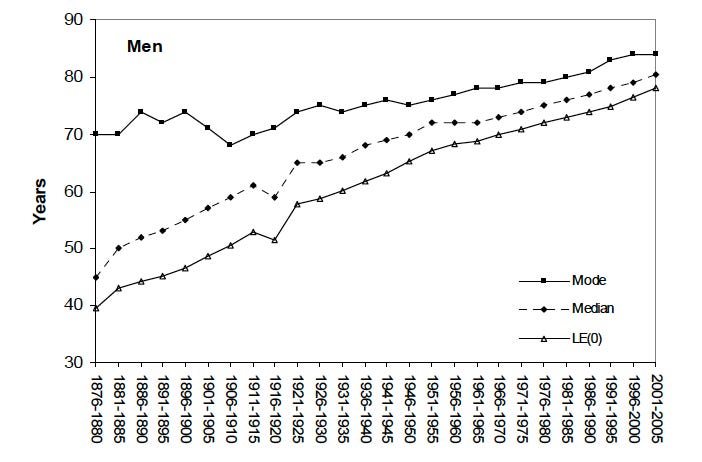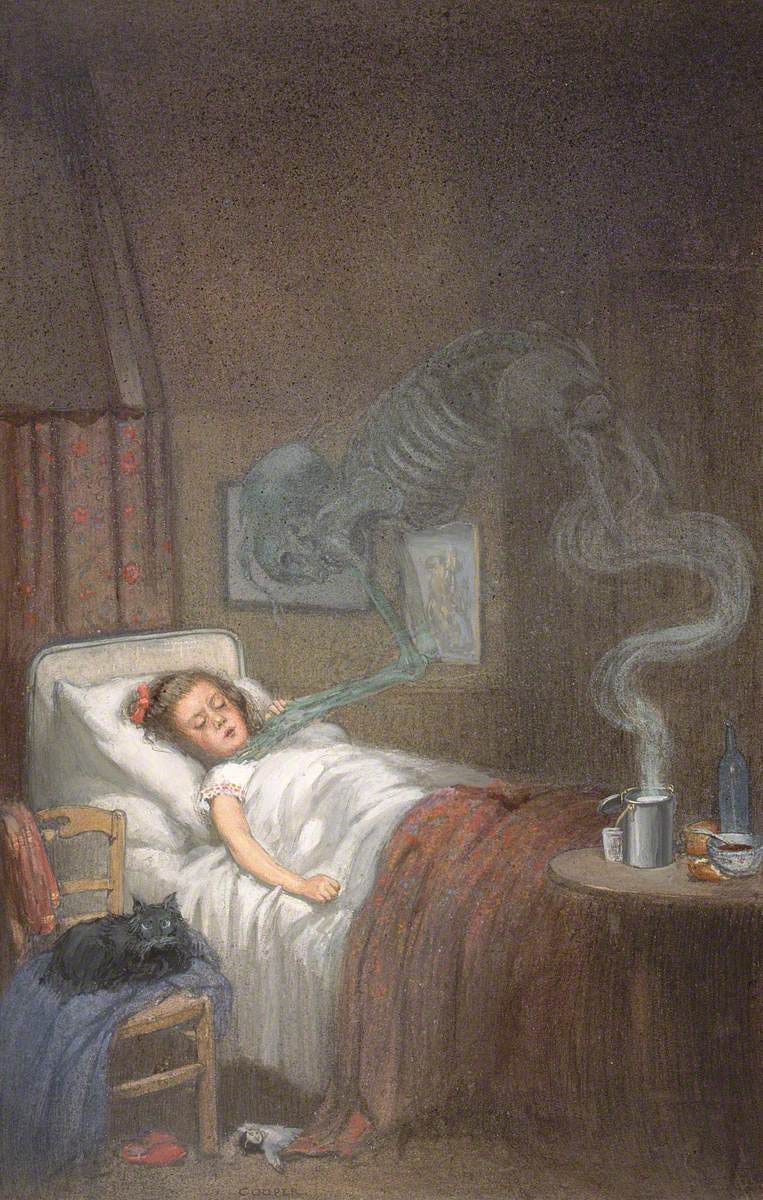“Historically, no one lived past age 35.”
I’ve heard *so* many versions of this claim over the years, including recently from a prominent menopause doctor/influencer (implying that menopause is not “natural” because no one lived long enough to go through it). Every time someone states this “fact,” a demographer loses a piece of their soul.
What’s the truth?
When life expectancy was in the 30s, you were more likely to die in your 70s than in your 30s.
Why?
· Life expectancy is an average
· Mortality under age 5 was extremely high historically
· If you survived to age 5 your chances of living to old age were decent.
I’m sure if you think about this for a minute it this will be obvious. But a picture is worth a thousand words:
Sweden is demography-famous for its high-quality mortality data, which dates back centuries. Above you can see a typical distribution of ages at death when life expectancy is 36. Mortality in infancy and childhood is extremely high (making up 32.7% of deaths in that year). Those very short lives bring down the average age at death, even though many people live to older ages.
Another way to look at this is via “survival curves”- which show the percent of people born in a certain year who survive to a specific age.
Source: Our World In Data
In 1851, life expectancy in England was around 40 years. About 70% of people were still alive by age 10 (so a slight improvement on 1750s Sweden). 50% of people were still alive at age 50, old enough to experience menopause and general human aging. Things have gotten a lot better though- today in England more than 95% of people are expected to make it past age 50.
Another POV to drive the point home:
Trends in the average (life expectancy at birth or LE(0)), median, and modal ages at death in Switzerland over time. Source: https://doi.org/10.4054/DemRes.2009.21.19
As seen above for Switzerland, even when average life expectancy was 40, the most common (modal) age of adult death was 70.
Of course we can’t know for sure what mortality rates were like before we had good records, but we know life expectancy was low for most of human history, because populations didn’t grow much despite high fertility. And bioarcheologists (people who study human skeletons from archeological digs to better understand the past) estimate that most humans in the past who lived to adulthood lived past the age of 50.
A reminder of how much vaccines have changed the world. A Ghostly Skeleton Trying to Strangle a Sick Child; Representing Diphtheria, Richard Tennant Cooper (1885–1957) Wellcome Collection
Bottom Line:
When life expectancy was low, high rates of infant and child mortality meant that many people died in the first few years of life. But if they survived childhood, people often lived much longer….even to old age.
This doesn’t mean that aging has an evolutionary purpose (that’s a topic for another day), but it’s wrong to say that old age is only a modern condition and thus unchartered biological territory. Older (and wiser) people have been a part of human societies for our whole history—wrinkles, menopause, and all.
Stay well,
Jenn
Further Reading:
Three Score and Ten? What Does Life Expectancy Really Measure?
Old age isn’t a modern phenomenon – many people lived long enough to grow old in the olden days, too, The Conversation







Brilliantly debunked. These graphs are so eye-opening!
Yes! This is so important to remind (or teach) people about this in our current health environment. I always remember in tandem with this that before now-common vaccines, healthy adults could suddenly die from something as simple as a cut from a razor (Henry Thoreau's brother, John, died of lockjaw), which skews the numbers, too.